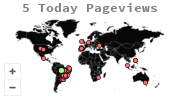INTENÇÃO DE COMPRA DE ALIMENTOS ORGÂNICOS: REVISÃO SISTEMÁTICA DOS PREDITORES UTILIZADOS EM EXTENSÕES DA TEORIA DO COMPORTAMENTO PLANEJADO
DOI :
https://doi.org/10.23925/2178-0080.2019v21i3.40454Résumé
A identificação de preditores da intenção de compra de alimentos orgânicos interessa a diversos profissionais e pesquisadores. A Teoria do Comportamento Planejado é um dos principais modelos teóricos utilizados com essa finalidade. Esta revisão identifica o efeito de construtos adicionais utilizados para melhorar o poder preditivo da TCP com foco na intenção de compra de alimentos orgânicos. Foram consideradas as bases: EBSCO, SPELL, SciELO, Scopus, Web of Science, e PsychINFO. Foram encontrados 12 trabalhos. Os construtos identificados foram: atitudes/normas morais, normas descritivas, comportamento passado, consciência em saúde, identidade própria, preocupação ambiental, experiência passada e confiança. As atitudes/normas morais são o construto mais utilizado e com o maior efeito único encontrado. Resultados detalhados e discussões são apresentados.
Téléchargements
Publiée
Comment citer
Numéro
Rubrique
Licence

Este obra está licenciado com uma Licença Creative Commons Atribuição 4.0 Internacional.






